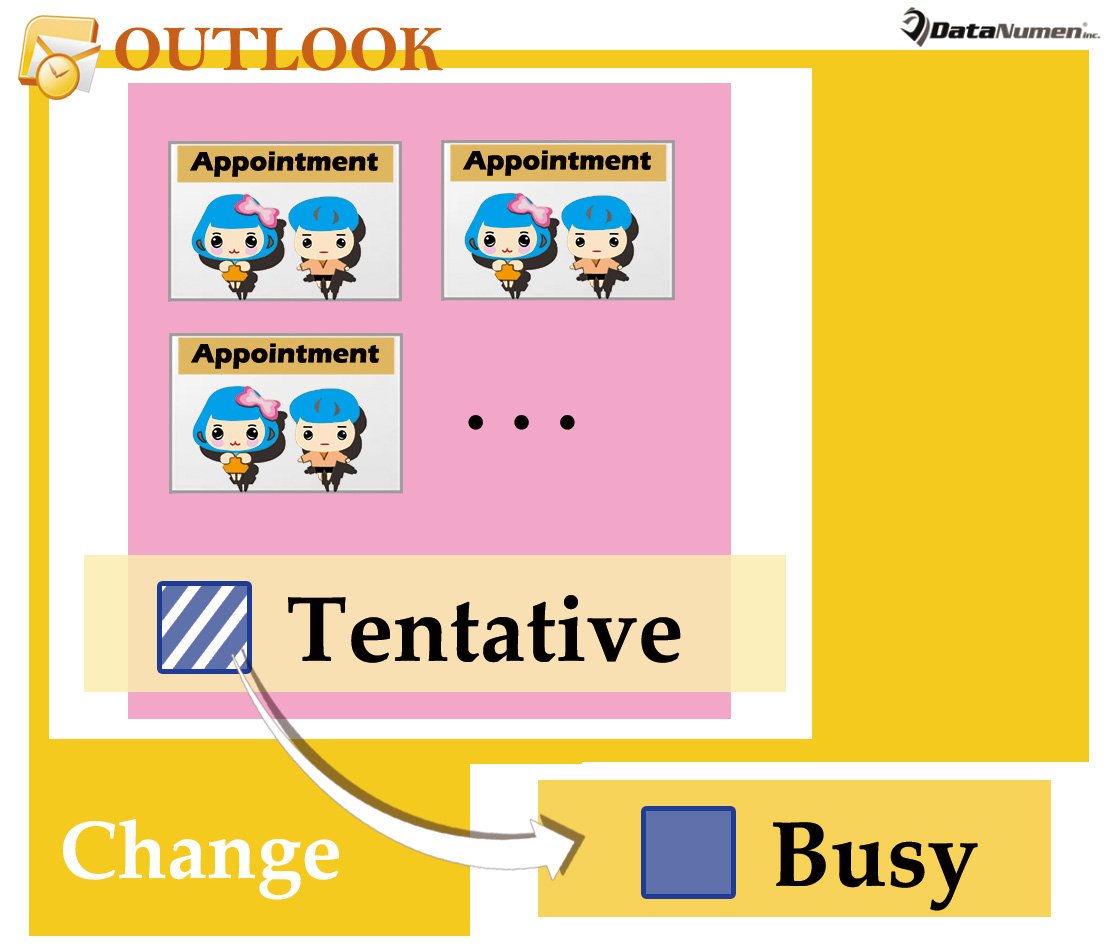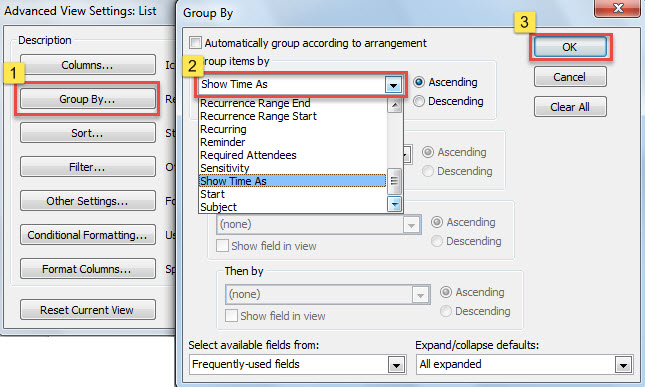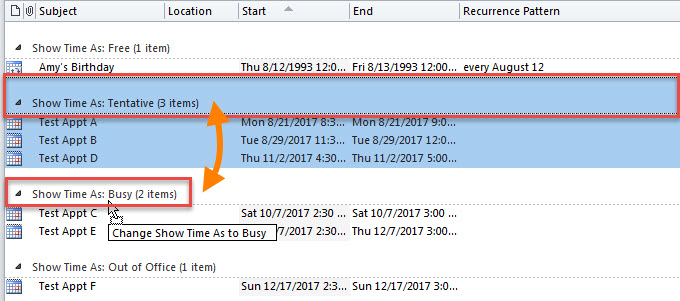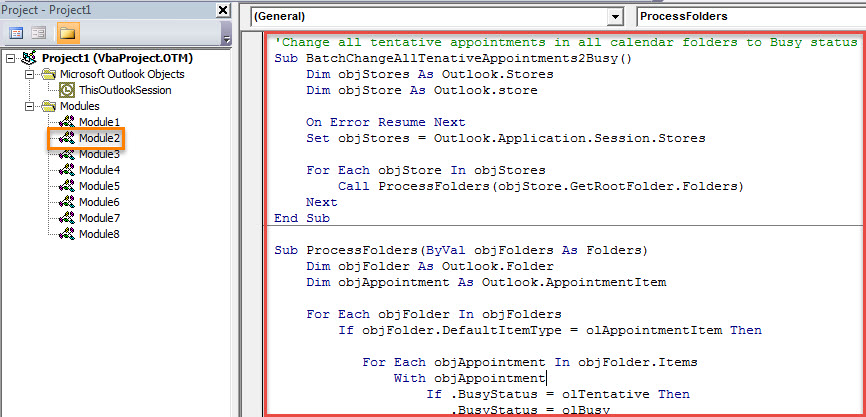If you want to quickly change all the appointments, which are shown as “Tentative”, to “Busy” status, you can refer to this article. Here we will share you 2 methods that can realize it in batches.
Some users have encountered such a case that after importing appointments into their Outlook, all of them are shown as ‘Tentative” status. But they want to show them as “Busy”. In this situation, you can use either of the following 2 methods to achieve it.

Method 1: Drag & Drop Tentative Appointments to “Busy” Group
- First off, launch Outlook application.
- Then, access the “Calendar” area by pressing “Ctrl + 2” key buttons.
- Next, open a Calendar folder.
- Afterwards, switch to “View” tab and select “Change View” > “List”.
- Later, click on the “View Settings” button.
- In the popup “Advanced View Settings” dialog box, hit “Group By” button.
- Subsequently, in the “Group By” box, select “Show Time As” in the “group items by” field.
- After that, click a series of “OK” to close all dialog boxes.
- Then, in the appointment list, you can find that all appointments have been divided into different groups based on their statuses.
- At this point, you can click on the “Show Time As: Tentative” group header.
- Lastly, drag and drop this group to the “Show Time As: Busy” group, like the following screenshot:
- At once, all the tentative appointments have been changed to “Busy” status.
Method 2: Batch Change with Outlook VBA
- For a start, in Outlook, press “Alt + F11” keys.
- Then, in the subsequent VBA editor window, open an unused module.
- Next, copy the following VBA code into this module.
'Change all tentative appointments in all calendar folders to Busy status
Sub BatchChangeAllTenativeAppointments2Busy()
Dim objStores As Outlook.Stores
Dim objStore As Outlook.store
On Error Resume Next
Set objStores = Outlook.Application.Session.Stores
For Each objStore In objStores
Call ProcessFolders(objStore.GetRootFolder.Folders)
Next
End Sub
Sub ProcessFolders(ByVal objFolders As Folders)
Dim objFolder As Outlook.Folder
Dim objAppointment As Outlook.AppointmentItem
For Each objFolder In objFolders
If objFolder.DefaultItemType = olAppointmentItem Then
For Each objAppointment In objFolder.Items
With objAppointment
If .BusyStatus = olTentative Then
.BusyStatus = olBusy
.Save
End If
End With
Next
Call ProcessFolders(objFolder.Folders)
End If
Next
End Sub
- Eventually, you can trigger this macro by pressing F5 key or hitting the “Run” icon in the toolbar.
- After macro finishes, all the tentative appointments in all the calendar folders will be changed to “Busy” status.
Clean up Old Outlook Items in Time
It’s known that the larger Outlook data file is, the more easily the file can become corrupted. Therefore, it is advisable to clean up old and useless items in Outlook on a regular basis. Otherwise, with time going on, your PST file will get oversized and tend to be damaged. At that time, you will try your best to recover your PST data, which can’t be accomplished by a simple inbox repair tool. You have to use a proficient third party tool, like DataNumen Outlook Repair.
Author Introduction:
Shirley Zhang is a data recovery expert in DataNumen, Inc., which is the world leader in data recovery technologies, including recover sql and outlook repair software products. For more information visit www.datanumen.com


